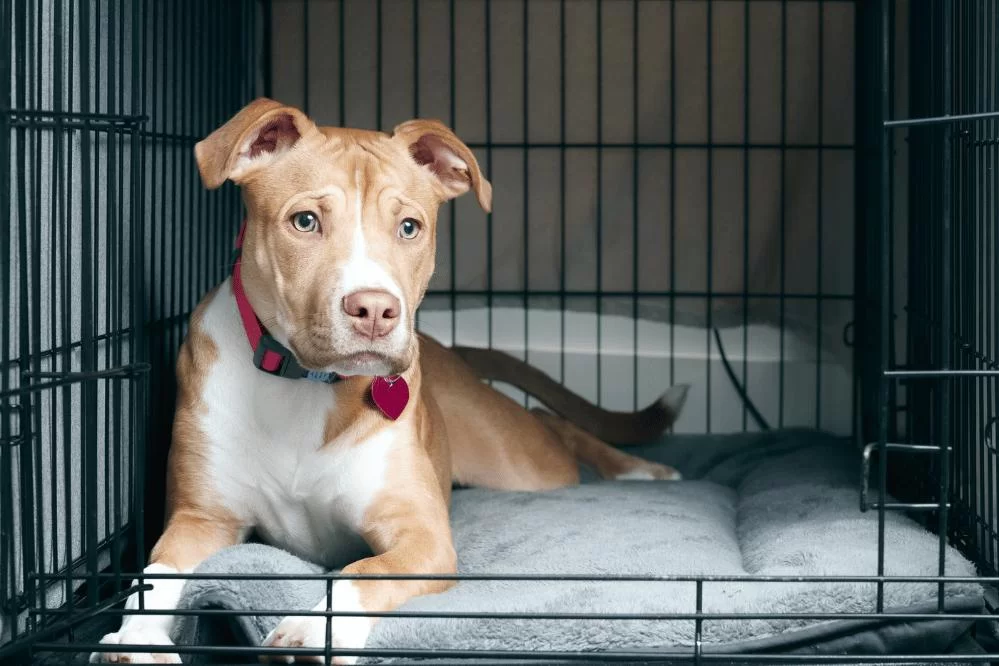- 1. Why Crate Training is Important
- 2. Understanding Your Dog's Needs During Crate Training
- 3. Steps to Teach Your Dog to Stay in a Crate Quietly
- 4. Common Mistakes to Avoid When Crate Training
- 5. Real-Life Case Study: A Success Story in Crate Training
1. Why Crate Training is Important
Crate training is one of the most valuable tools for ensuring your dog's comfort and safety. Not only does it provide a secure space for your pet to relax and rest, but it also helps with house training and preventing destructive behavior when you’re not home. However, teaching a dog to stay quietly in their crate can sometimes be a challenge. With proper training techniques, your dog can learn to enjoy their crate as a safe and peaceful environment.
2. Understanding Your Dog's Needs During Crate Training
Before diving into the training process, it’s crucial to understand that each dog is different. Some dogs naturally take to the crate, while others may experience anxiety or stress at first. The key to successful crate training lies in patience, consistency, and understanding your dog’s needs. Dogs, especially puppies, often see the crate as a confined space, so it's important to make the crate a positive experience rather than a punishment.
Make sure to consider your dog’s temperament, age, and prior experiences with confinement. Some dogs may need extra comfort or reassurance during the initial stages of training. With the right approach, your dog will learn to see their crate as a cozy retreat rather than a place of isolation.

1008 W Hazelwood Dr, Urbana, IL 61802, USA
See Details3. Steps to Teach Your Dog to Stay in a Crate Quietly
Teaching a dog to stay quietly in a crate requires a step-by-step approach. Here’s how you can do it:
- Step 1: Introduce the Crate Gradually – Start by allowing your dog to explore the crate on their own. Place treats or favorite toys inside to encourage your dog to enter. This helps create a positive association with the crate.
- Step 2: Create Positive Associations – Once your dog is comfortable entering the crate, begin closing the door for short periods while they are inside. Start with just a few seconds, then gradually increase the duration. Always reward your dog with treats and praise for staying calm.
- Step 3: Use Command Words – Introduce a consistent cue, like “stay” or “quiet,” when your dog is inside the crate. This will help your dog understand what’s expected when the crate door is closed.
- Step 4: Increase Time in the Crate – As your dog becomes more accustomed to the crate, increase the amount of time they spend inside. Keep the environment calm and quiet, and avoid sudden distractions or loud noises that could cause anxiety.
- Step 5: Stay Consistent – Consistency is key when crate training. Ensure your dog is placed in the crate regularly, so they learn to view it as a part of their daily routine. Over time, your dog will learn to relax and stay quietly in the crate.
By following these steps, you can create a calm and quiet experience for your dog, making crate time more enjoyable for both of you.
4. Common Mistakes to Avoid When Crate Training
While crate training is an effective tool, it’s important to avoid common mistakes that could hinder progress. Some of these include:
- Using the Crate as Punishment: Never use the crate as a form of punishment, as this will create negative associations and cause your dog to fear the crate.
- Crating for Too Long: Leaving your dog in the crate for extended periods can lead to anxiety and frustration. Make sure to give your dog plenty of opportunities for exercise and bathroom breaks.
- Rushing the Process: Crate training takes time and patience. Rushing the process may cause stress or anxiety, preventing your dog from adapting to the crate.
- Not Using Positive Reinforcement: Failing to reward your dog for staying quietly in the crate can slow down the training process. Positive reinforcement is essential for encouraging good behavior.
Avoiding these mistakes will help create a smoother and more successful crate training experience for both you and your dog.
5. Real-Life Case Study: A Success Story in Crate Training
One of our clients, Alex, struggled with crate training his rescue dog, Max, who was initially terrified of being confined. Max would whine and bark whenever he was placed in the crate, making it difficult for Alex to leave the house. However, after several weeks of following the steps mentioned earlier, Alex introduced Max to the crate gradually, using positive reinforcement. He also made sure to keep training sessions short and rewarding. Over time, Max began to view the crate as a safe space, and eventually, he would enter the crate on his own, settling in quietly without fuss.
This success story highlights how patience, consistency, and a structured approach can turn crate training into a positive experience for both pet and owner. If you're facing similar challenges, consider reaching out to experts at Hidden Brook Veterinary for personalized tips and products to support your dog’s training journey.











